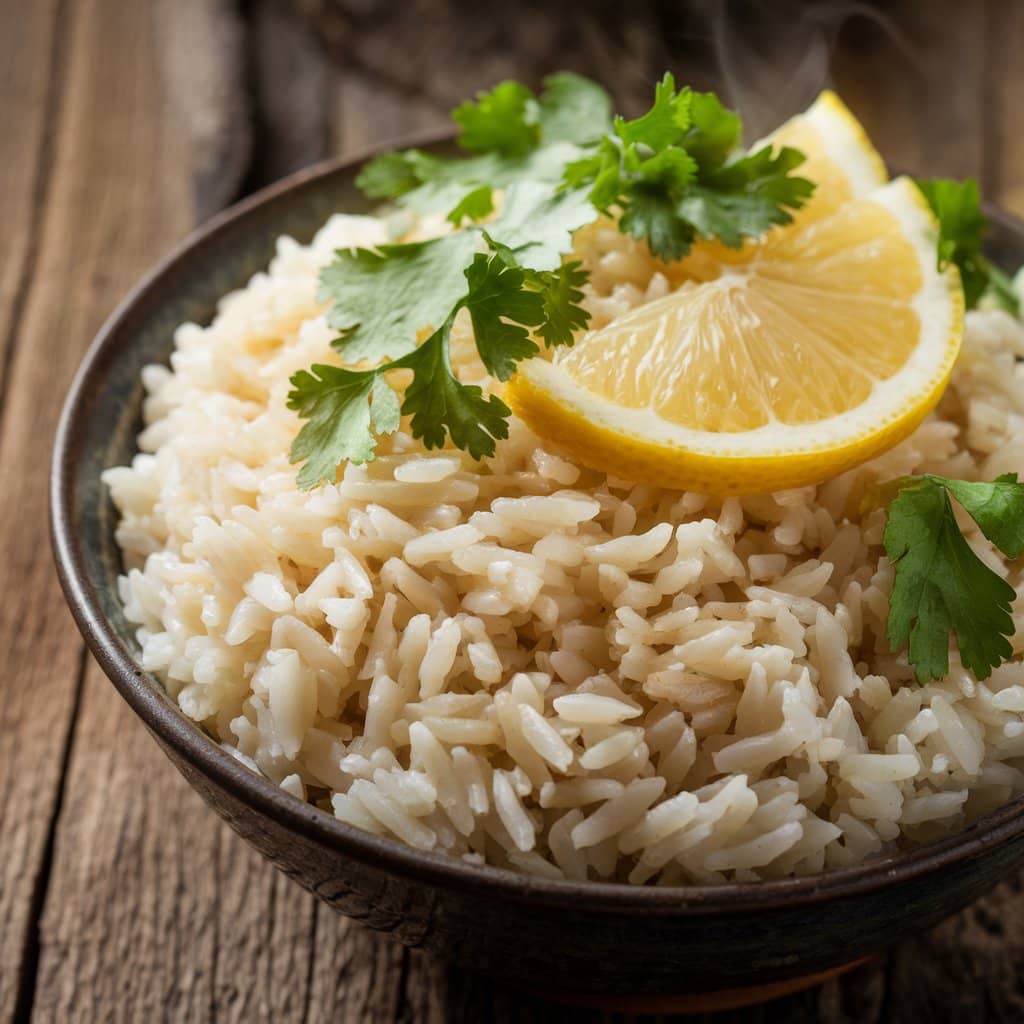How to Make More Flavorful Rice? Rice is a staple food enjoyed worldwide, forming the foundation of countless delicious meals. While cooking rice seems simple, achieving perfectly flavorful rice requires more than boiling water and adding grains. The secret lies in selecting the right ingredients, applying the correct techniques, and using creative seasonings. In this guide, we’ll explore expert tips on how to elevate rice from a basic side dish to a standout component of any meal.
Table of contents
Choosing the Right Type of Rice for More Flavor
Selecting the right type of rice is the first step toward making more flavorful rice. Different varieties have unique textures, aromas, and flavor profiles that suit specific dishes. Here’s a breakdown of popular rice types and how they enhance your meals:
Long-Grain vs. Short-Grain Rice for Better Taste
- Long-Grain Rice
- Examples: Basmati, Jasmine, White Rice
- Characteristics: Long and slender grains that stay separate when cooked.
- Best For: Pilafs, fried rice, and side dishes due to its light, fluffy texture.
- Short-Grain Rice
- Examples: Arborio, Sushi Rice
- Characteristics: Plump, sticky grains that clump together.
- Best For: Risottos, sushi, and rice puddings for creamy or sticky dishes.
Specialty Rice Varieties for Flavorful Rice Dishes
- Basmati Rice: Known for its fragrant aroma and nutty flavor, basmati is perfect for Indian and Middle Eastern dishes.
- Jasmine Rice: Its slightly sweet, floral scent pairs well with Southeast Asian cuisine.
- Wild Rice: Nutty and earthy, wild rice is great for hearty salads and stuffing.
- Black or Forbidden Rice: Packed with antioxidants and offering a rich, nutty taste, it’s both nutritious and visually stunning.
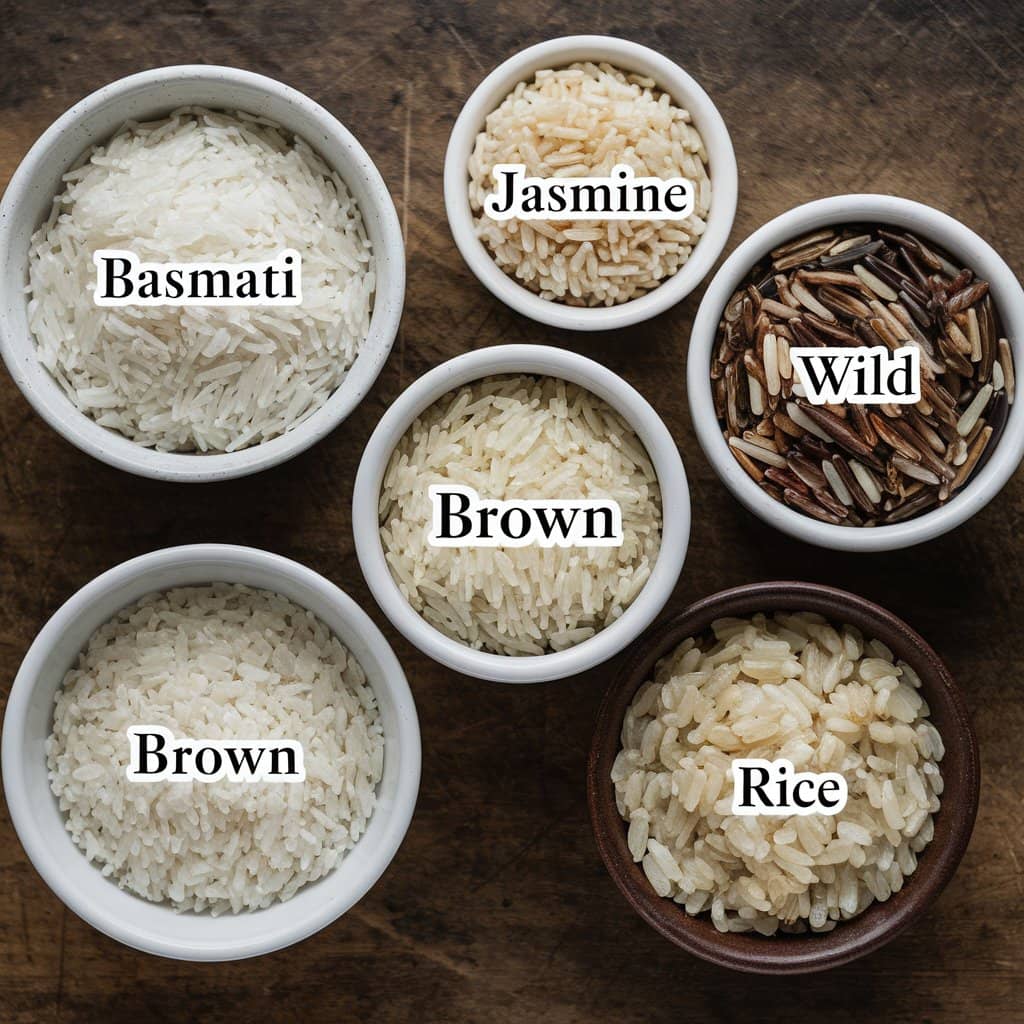
Brown vs. White Rice: Which Tastes Better?
- Brown Rice: A whole grain with the bran and germ intact, providing a chewier texture and nutty taste.
- White Rice: Milled to remove the bran, making it softer and quicker to cook but less nutrient-dense.
By choosing the correct type of rice based on your desired dish, you can build a flavorful base that complements your meal perfectly.
Prepping Rice for Maximum Flavor
Proper preparation can significantly enhance the taste and texture of rice. Simple steps like rinsing, soaking, and toasting can transform a basic pot of rice into a flavorful masterpiece. Here’s how to prep rice the right way:
Rinsing and Soaking Rice for a Better Taste
- Rinsing Rice:
- Why: Removes excess starch, preventing clumping and creating fluffier rice.
- How: Place rice in a fine-mesh strainer or bowl, rinse under cold water until the water runs clear.
- Soaking Rice:
- Why: Shortens cooking time and enhances texture.
- How: Soak rice in cold water for 20-30 minutes, then drain. This works well for long-grain varieties like basmati or jasmine.
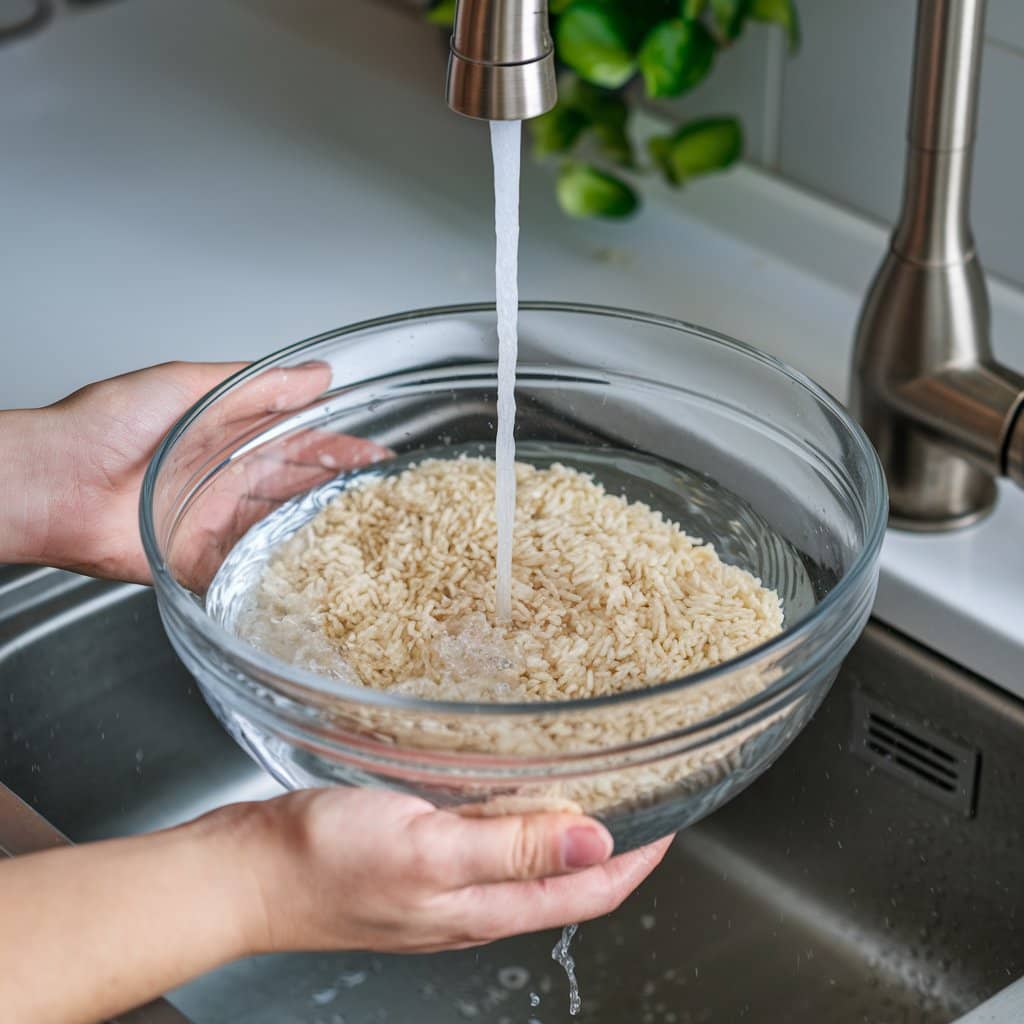
Toasting Rice for Added Depth and Nutty Flavor
- Why: Toasting rice adds a rich, nutty flavor that enhances its overall taste.
- How: Heat a tablespoon of oil or butter in a pan over medium heat. Add the rice and stir frequently until it turns lightly golden and releases a toasty aroma. Proceed with your preferred cooking method afterward.
Infusing Flavor While Prepping Rice
- Infused Water: Add spices like cinnamon sticks or bay leaves to the soaking water for subtle flavor infusion.
- Citrus Zest or Extracts: A hint of lemon or lime zest can add brightness to the rice.
Prepping rice thoughtfully can elevate its taste, making even simple dishes taste more complex and satisfying.
Enhancing Rice with Liquid Choices
The liquid used to cook rice plays a crucial role in determining its flavor. Water is the standard, but swapping it for more flavorful options can transform the taste profile of your rice. Here are some tips on selecting the best cooking liquids and how to use them effectively:
Water Alternatives for More Flavorful Rice
- Broth or Stock:
- Why: Adds depth and savory richness.
- Best For: Pilafs, risottos, and savory dishes.
- Tip: Use chicken, beef, or vegetable broth. Choose low-sodium versions to control salt levels.
- Coconut Milk:
- Why: Adds a creamy, slightly sweet flavor.
- Best For: Thai curries, Caribbean-inspired dishes, and tropical rice recipes.
- Tip: Mix coconut milk with water in a 1:1 ratio for balanced richness.
- Tomato Juice or Sauce:
- Why: Adds acidity and a robust tomato flavor.
- Best For: Spanish rice, paella, or Mexican-inspired dishes.
- Tip: Dilute thick sauces with water or broth for even cooking.
- Tea or Herbal Infusions:
- Why: Adds subtle herbal notes.
- Best For: Delicate rice dishes and Asian-inspired recipes.
- Tip: Use strong brewed teas like green or jasmine tea for aromatic rice.
Correct Liquid-to-Rice Ratios for Better-Tasting Rice
Getting the liquid-to-rice ratio right is essential for perfectly cooked rice. Here are common ratios for different types of rice:
- Long-Grain White Rice: 2 cups of liquid per 1 cup of rice.
- Brown Rice: 2.5 to 3 cups of liquid per 1 cup of rice.
- Jasmine or Basmati Rice: 1.5 cups of liquid per 1 cup of rice (for fluffier results).
- Arborio Rice (for Risotto): Add liquid gradually while stirring for creaminess.
Flavor-Boosting Liquid Combinations
- Broth + Wine: Adds sophistication and richness. Use this combo for pilafs and risottos.
- Coconut Milk + Citrus Juice: A perfect blend for tropical-inspired dishes.
- Herb-Infused Water + Spices: Boil water with herbs and whole spices for a customized, aromatic liquid.
Adding Aromatics and Seasonings to Make Rice Taste Better
Aromatics and seasonings are the heart of flavorful rice. Adding herbs, spices, and other ingredients elevates rice from plain to deliciously complex. Here’s how to master the art of seasoning your rice:
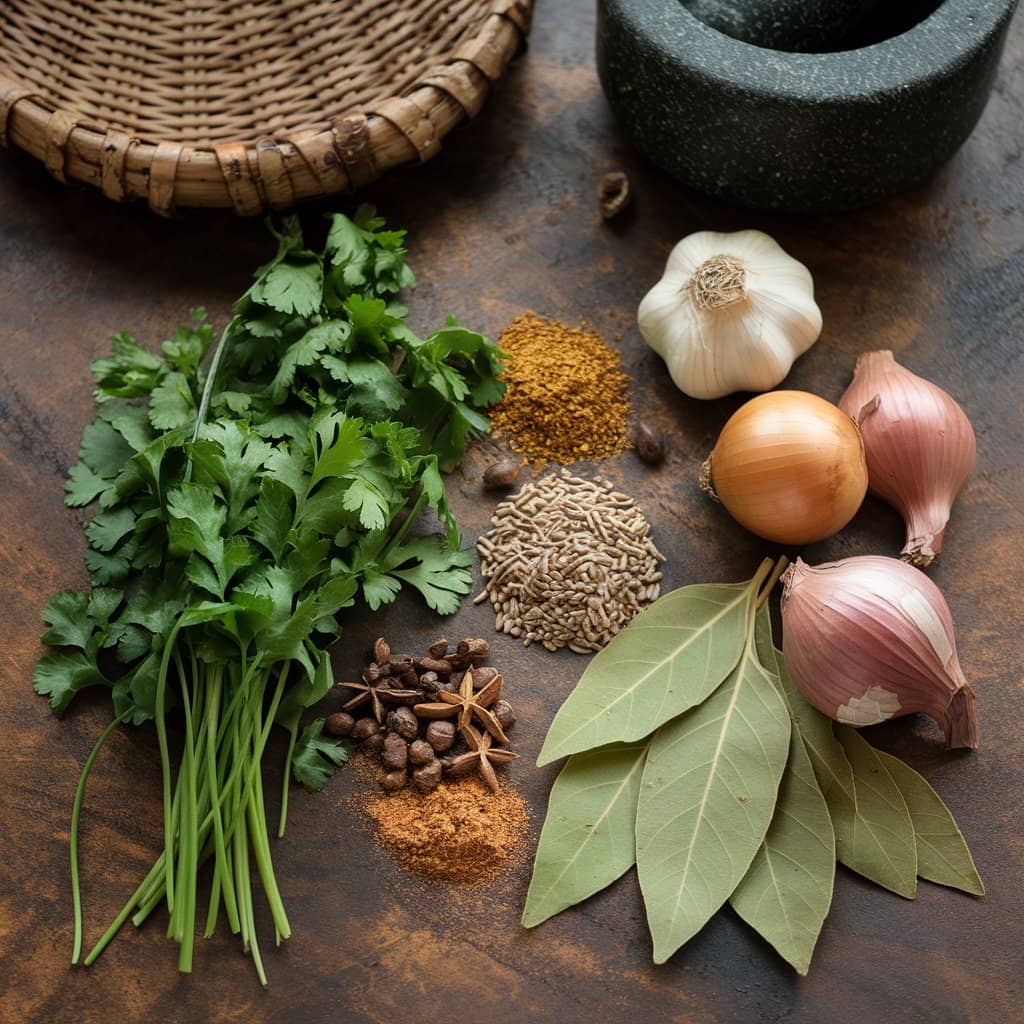
Spices and Herbs to Enhance Rice Flavor
- Whole Spices:
- Examples: Bay leaves, cinnamon sticks, cloves, cardamom pods, and star anise.
- How to Use: Add whole spices to the cooking liquid for slow infusion. Remove before serving.
- Ground Spices:
- Examples: Cumin, turmeric, paprika, and curry powder.
- How to Use: Toast spices in oil before adding rice for maximum flavor.
- Fresh Herbs:
- Examples: Cilantro, parsley, dill, and mint.
- How to Use: Add fresh herbs after cooking for a bright, fresh finish.
Fresh Aromatics Like Onions, Garlic, and Ginger
- Onions and Garlic:
- Why: They add savory richness and depth.
- How to Use: Sauté finely chopped onions and garlic in oil before adding rice.
- Ginger and Lemongrass:
- Why: Provide a zesty, citrus-like flavor.
- How to Use: Mince ginger or bruise lemongrass stalks and add to the cooking pot.
- Peppers and Chilies:
- Why: Add heat and complexity.
- How to Use: Add fresh or dried chilies to the cooking liquid for extra spice.
Flavor-Infusing Techniques
- Sautéing Aromatics:
- Heat oil or butter in a pan. Add aromatics like onions, garlic, and spices. Cook until fragrant, then add rice. This step ensures even flavor distribution.
- Layering Ingredients:
- Create layers of flavor by adding ingredients like tomatoes, herbs, or dried fruit directly into the cooking pot.
- Finishing with Butter or Oil:
- Stir in butter, olive oil, or sesame oil after cooking to enhance richness and give a glossy finish.
Cooking Techniques for Flavorful Rice
Mastering the right cooking techniques is essential for making rice that is not only perfectly cooked but also packed with flavor. Here are some tried-and-true methods that bring out the best in your rice:
The Absorption Method
- What It Is:
- This classic method allows rice to absorb all the liquid during cooking.
- How to Use It:
- Rinse the rice and drain well.
- Heat oil or butter in a pot, add rice, and toast lightly.
- Add the desired amount of liquid (broth or water) and seasonings.
- Bring to a boil, reduce heat, cover tightly, and simmer until liquid is absorbed.
- Let the rice rest for 10 minutes before fluffing with a fork.
- Best For:
- Long-grain rice like basmati, jasmine, and plain white rice.
The Pilaf Method
- What It Is:
- A method where rice is sautéed in oil with aromatics before simmering in seasoned liquid.
- How to Use It:
- Heat oil or butter in a heavy-bottomed pan.
- Add chopped onions, garlic, and spices. Sauté until fragrant.
- Stir in the rice and cook until it starts to brown.
- Add hot broth or water, cover, and simmer until rice is tender.
- Best For:
- Rice pilafs, Middle Eastern or Mediterranean-inspired dishes.
The Risotto Technique
- What It Is:
- A slow-cooking method involving continuous stirring and gradual liquid addition.
- How to Use It:
- Heat oil and butter in a large skillet. Add finely chopped onions and cook until translucent.
- Stir in Arborio rice until it’s lightly toasted.
- Add a splash of white wine and cook until evaporated.
- Gradually add hot broth, one ladle at a time, stirring constantly until absorbed before adding more.
- Repeat until rice is creamy and fully cooked.
- Best For:
- Creamy dishes like risotto and other Italian-inspired rice recipes.
The Steaming Method
- What It Is:
- A gentle cooking method using steam to cook the rice.
- How to Use It:
- Rinse and soak rice.
- Place in a steamer basket lined with cheesecloth.
- Steam over simmering water for 20-30 minutes until tender.
- Best For:
- Sticky rice, sushi rice, or rice used in Asian cuisine.
Post-Cooking Tips for Enhanced Flavor
Cooking rice is just the beginning. How you handle it after cooking can elevate its taste and texture even further. Here are some expert tips to ensure your rice is not only flavorful but also visually appealing and satisfying:
Resting and Fluffing the Rice
- Let It Rest:
- After cooking, remove the rice from heat but keep the lid on.
- Let it rest for 10-15 minutes. This allows steam to redistribute, ensuring even moisture and reducing stickiness.
- Fluff with a Fork:
- Use a fork to gently separate the grains after resting. Avoid using spoons, which can mash the rice.
- Fluffing adds air to the rice, keeping it light and fluffy.
Adding Finishing Touches
- Fresh Herbs:
- Sprinkle chopped cilantro, parsley, or dill for added freshness and color.
- Herbs like mint or basil can add an aromatic boost for Mediterranean or Asian-inspired dishes.
- Citrus Zest and Juice:
- Grate lemon or lime zest over the rice for a bright, tangy kick.
- A splash of citrus juice before serving adds a fresh, vibrant taste.
- Butter and Oils:
- Stir in melted butter or olive oil for a rich, glossy finish.
- Use sesame oil for Asian-style rice or coconut oil for tropical-inspired dishes.
Enhancing with Toppings and Mix-Ins
- Nuts and Seeds:
- Add toasted almonds, cashews, or sesame seeds for crunch and added flavor.
- Dried Fruits:
- Raisins, cranberries, or apricots provide a sweet contrast in pilafs and festive rice dishes.
- Cheese:
- Sprinkle grated parmesan or feta for added richness and depth in Mediterranean-style recipes.
- Sauces and Dressings:
- Drizzle with soy sauce, tahini, or vinaigrette for added complexity.
Reheating and Storing Rice Properly
- Storing:
- Transfer cooked rice to an airtight container and refrigerate for up to 4 days.
- Freeze in single portions for easy reheating later.
- Reheating:
- Use the microwave: Sprinkle a little water over the rice, cover, and heat in short bursts.
- Use the stovetop: Add a splash of water or broth, cover, and reheat over low heat, stirring occasionally.
Creative Rice Recipes for Inspiration
To help you put these tips into practice, here are some delicious and flavorful rice recipes from around the world. Each recipe highlights unique ingredients and cooking techniques to elevate your rice dishes:
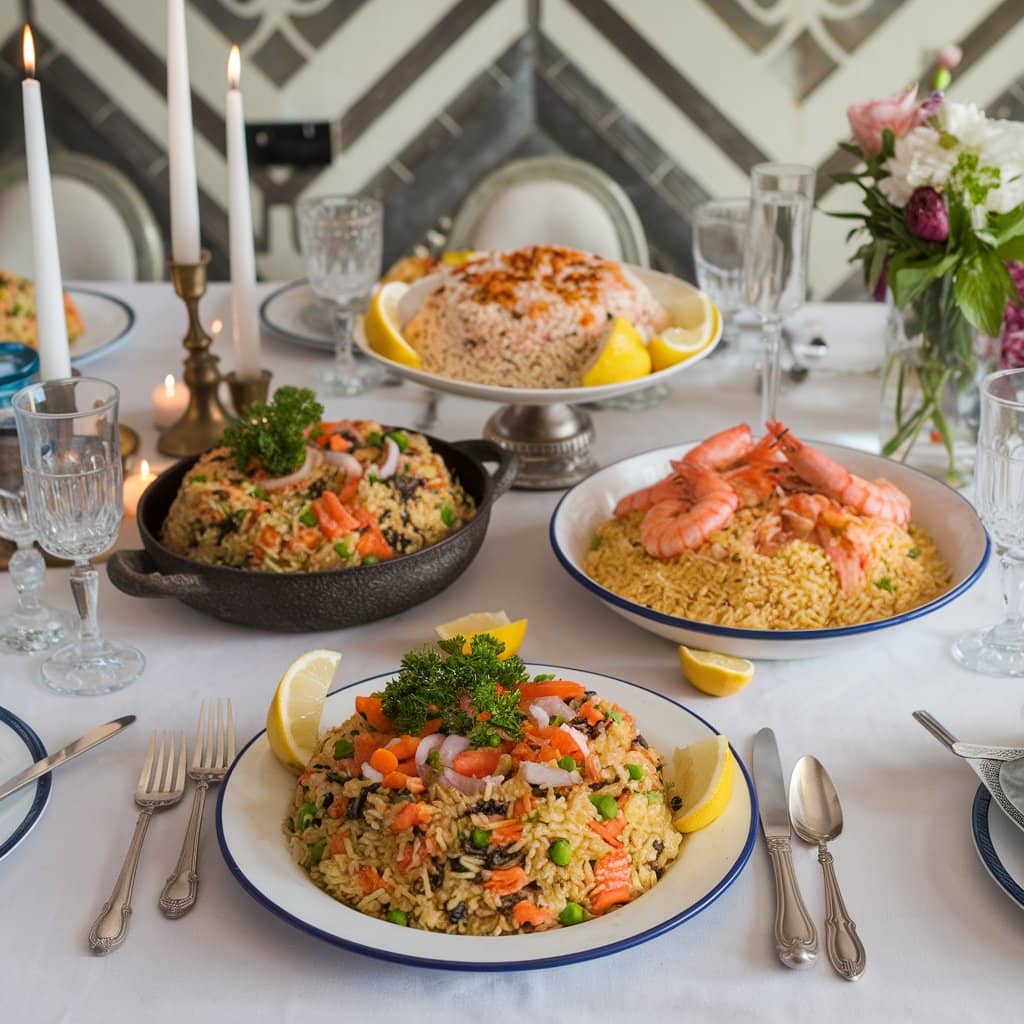
Herbed Rice Pilaf
Ingredients:
- 1 cup basmati rice
- 2 cups chicken or vegetable broth
- 1 small onion, finely chopped
- 2 tbsp olive oil or butter
- 1 bay leaf, 1 cinnamon stick, and 2 cloves
- Fresh herbs: parsley, dill, and cilantro
Instructions:
- Sauté the onion in olive oil until translucent.
- Add the rice, bay leaf, cinnamon, and cloves. Stir until lightly toasted.
- Pour in the broth, bring to a boil, then cover and simmer for 15 minutes.
- Remove from heat, let it rest for 10 minutes, and fluff with a fork.
- Stir in freshly chopped herbs before serving.
Coconut-Lime Rice
Ingredients:
- 1 cup jasmine rice
- 1 cup coconut milk + 1 cup water
- Zest and juice of 1 lime
- 1 tsp salt
Instructions:
- Rinse the rice until water runs clear.
- Combine coconut milk, water, lime zest, lime juice, and salt in a saucepan.
- Bring to a boil, then add the rice. Reduce heat, cover, and simmer for 15 minutes.
- Let rest for 10 minutes before fluffing. Serve with Thai curries or grilled seafood.
Saffron-Infused Rice
Ingredients:
- 1 cup long-grain rice (such as basmati)
- 2 cups chicken or vegetable broth
- A pinch of saffron threads, soaked in 2 tbsp warm water
- 1 tbsp olive oil or butter
- 1 small onion, finely diced
Instructions:
- Heat olive oil in a saucepan and sauté the onion until golden.
- Stir in the rice and cook for 2 minutes until lightly toasted.
- Add the broth and saffron water. Stir well and bring to a boil.
- Cover, reduce heat, and simmer for 15 minutes.
- Let it rest for 10 minutes, fluff, and serve with grilled meats or vegetables.
Mexican-Style Tomato Rice
Ingredients:
- 1 cup long-grain rice
- 2 cups tomato juice or broth
- 1 small onion, chopped
- 2 cloves garlic, minced
- 1 tsp ground cumin
- 2 tbsp tomato paste
Instructions:
- Sauté onion and garlic in olive oil until soft.
- Add the rice and cumin, stirring until the rice is golden brown.
- Stir in tomato paste and tomato juice. Bring to a boil.
- Cover, reduce heat, and simmer for 15 minutes.
- Serve with tacos, enchiladas, or grilled meats.
Wild Rice and Mushroom Pilaf
Ingredients:
- 1 cup wild rice blend
- 2 1/2 cups vegetable broth
- 1 cup mushrooms, sliced
- 1 small onion, diced
- 2 tbsp olive oil
- Fresh thyme and parsley
Instructions:
- Heat olive oil in a large skillet. Add onions and mushrooms. Sauté until golden brown.
- Stir in the wild rice and cook for 2 minutes.
- Add broth, bring to a boil, then cover and simmer for 40-45 minutes.
- Remove from heat, let rest, and fluff with a fork. Sprinkle with fresh herbs before serving.
FAQs About Making More Flavorful Rice
Here are some frequently asked questions about enhancing rice flavor, along with expert answers to help you perfect your rice dishes:
1. How Can I Make Rice Taste Better Without Salt?
Answer:
Enhance rice flavor by using broth instead of water, adding herbs like parsley or cilantro, and using aromatics such as garlic, onion, or ginger. Citrus juice, coconut milk, and spices like cumin or turmeric also boost flavor without relying on salt.
2. Why Does My Rice Always Taste Bland?
Answer:
Rice can taste bland if it’s cooked with only water and no seasonings. To fix this, toast the rice before cooking, use broth or seasoned liquid, and add aromatics like bay leaves, garlic, or whole spices during the cooking process. Finishing with herbs or a drizzle of olive oil also helps.
3. What Spices Work Best for Rice?
Answer:
Common spices for rice include cumin, paprika, turmeric, cinnamon, cardamom, and bay leaves. Use spice blends like curry powder, garam masala, or Cajun seasoning for more complex flavors. Add ground spices when sautéing the rice for even distribution.
4. Can I Add Butter or Oil to Rice?
Answer:
Yes! Adding butter or oil enhances richness and prevents sticking. Use olive oil or sesame oil for extra flavor in Mediterranean or Asian dishes. For a creamy texture, stir in butter after the rice has finished cooking.
5. Should I Rinse Rice Before Cooking?
Answer:
Rinsing rice removes excess starch, resulting in fluffier rice with separated grains. It’s essential for varieties like basmati and jasmine. However, avoid rinsing risotto or sushi rice, as some starch is needed for creaminess or stickiness.
6. How Can I Reheat Rice Without Drying It Out?
Answer:
To reheat rice without drying it out, sprinkle a little water over the rice, cover with a damp paper towel, and microwave in 1-minute intervals. Alternatively, reheat on the stovetop with a splash of broth or water, stirring occasionally.
Conclusion
Rice is a versatile and globally cherished staple that can be transformed into a flavorful culinary masterpiece with the right techniques. From choosing the best rice variety to using aromatic seasonings, flavorful cooking liquids, and expert post-cooking tips, every step plays a crucial role in enhancing its taste and texture.
By applying methods like toasting the rice, cooking it in broth or coconut milk, and adding herbs, spices, and fresh aromatics, you can elevate even the simplest rice dish into something extraordinary. Whether you prefer the nutty richness of saffron-infused basmati or the creamy indulgence of a mushroom and wild rice pilaf, the possibilities are endless.
With the tips, recipes, and answers to common rice-related questions shared in this guide, you’re now equipped to create rice dishes that are not only satisfying but bursting with mouthwatering flavors. Happy cooking!

